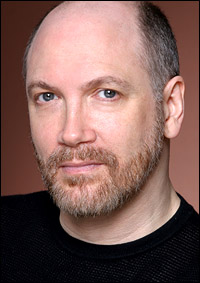What Remains
By Nausheen Eusuf
Longleaf Press
At Methodist University
ISBN-13: 978-0-9829290-2-5
20 Pages
Review by Dennis Daly
I could not find a false note in this entire collection of sixteen poems by Nausheen Eusuf—unusual for a first chapbook by a young writer. Eusuf delves into the details of her mother’s long illness and death, all the while searching through the varying facets and meanings of fate and home and grief. She balances an understated, observant tone with a number of pretty intricate formal techniques resulting in some very interesting and even exquisite pieces of poetic art.
In the poem Baishakh Eusuf mulls over childhood memories of Dhaka, Baangladesh in short lyrical lines. She says,
When I was a child
I’d watch the fat rain
drops splash noisily
into puddles forming
in the schoolyard.
I’d make sailboats
out of pages torn
from my notebook
and set them asail
the stormy puddles.
I’d race the other kids
But mine always
Went under first.
Later on in the poem we find out that going home is not always a simple matter. The poet explains,
…I want to tell
him that I too can make
the paper sailboats.
I try to recall how I used
to make them, and find
that I’ve forgotten.
Setting up a number of poems on coping with terminal illness, Eusuf, in a prose poem entitled Death’s Visit, describes in graphic detail, not without a touch of humor, Death’s memorable visit to her family’s home. “He was dressed impeccably: silk handkerchief peering out the breast pocket of his suit, gold coff links glittering from his wrists. But his flesh crawled with maggots.” She then goes on to relate how her mother defied death and for her bravery was condemned to a much longer drawn out affair with much suffering added in.
Eusuf includes a couple of sestinas in her collection. This is not an easy form to work with, especially with a tone so understated and a subject matter so personal. The repetition of the final word in each of the stanzas lends itself more to public poetry. In the poem Sestina the poet’s child-persona believes she commands legions of angels. She must keep death a bay. Her mother’s life depends on her watchfulness. All the while death, moving in, threatens. The poet puts it this way,
At dusk, conspiring rain drops whisper
outside the window. What did they know?
In the sterile little cabin, the mother
lies back in bed, inert. The child
pretends to read, to please her aunts.
From a distance, Azrail keeps watch.
In the end the child’s imagination with the help of magic temporarily at least triumphs over the encircling evil. Eusuf satisfyingly concludes the poem this way,
But secretly, the child already knows
what the aunts do not. Entranced, she whispers
to her mother magic words, and keeps watch.
Well done.
The Dialysis Room is another poem of Eusuf’s in which she demonstrates her powers of observation. The poet looks through her father’s eyes at the disturbing scene of tubes and florescence and screens. Nurses, for example appear cordial and correct but also reserved. Human nature can deal with only so much of the personal variety of tragedy. The poet’s father early on takes stock of the others in the room, those,
…who lay tethered
in motionless submission, surveying the room
with sunken eyes…
Then he would also grimly observe,
Every now and then, one of the wasted
forms would disappear, a name erased
from the whiteboard schedule on the wall,
the vacant spot soon, too soon, replaced.
Going Home, a poem in which nothing and everything happens, describes the poet’s plane flight home, presumably for her mother’s funeral, with subtle internal language. It is really a marvelously well done sonnet. Here are my favorite lines,
I think of home , what separation has meant.
Indifferent, the plane begins its final descent,
the earth turning below us, like the turning
of generations…
In the poem Grief Eusuf delivers detail after detail from the morgue to the mosque to the graveyard and then the aftermath. And in this aftermath she nails it. She says,
It is her glasses, perched so casually
on the TV where she left them last,
her toothbrush in the bathroom, her cotton saris
starched and folded, on the chair, the house
suddenly a museum, and we its curators.
The title poem closes this collection out; it is not among Eusuf’s strongest poems but it is positioned well. I like these lines very much:
And above the rooftops with their potted
Plants, a kite soars in the high blue air,
Straining to be one with wind and sky,
And in the veranda, the sunlit squares
Slope gently eastward, already receding
Into the unknown from whence they came.
Nausheen Eusuf’s poetry shows clear poetic talent and subtle observational powers. I look forward to her future books.









































